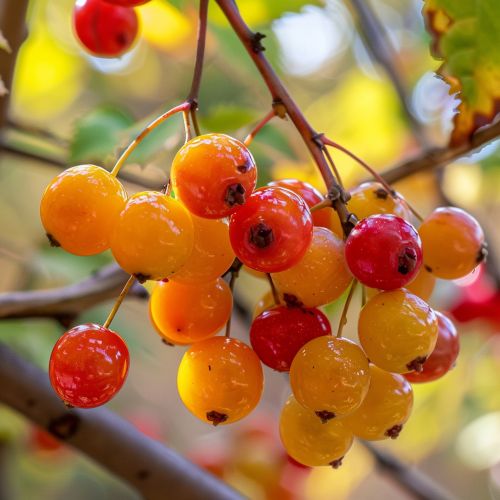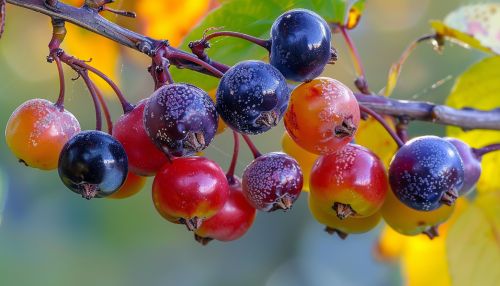Vaccinium
Taxonomy and Etymology
The genus Vaccinium is a group of plants that belong to the family Ericaceae family. The name Vaccinium is derived from the Latin word "vaccinus", which means "of or from cows". This is believed to be a reference to the use of Vaccinium berries as food for cows in some regions.
Description
Vaccinium species are usually shrubs, varying in size from low, ground-hugging plants to taller shrubs that can reach up to 4 meters in height. The leaves of Vaccinium plants are usually simple and arranged alternately on the branches. The flowers are typically bell-shaped, with colors ranging from white to pink. The fruit produced by Vaccinium plants is a berry, often brightly colored and rich in antioxidants.


Distribution and Habitat
Vaccinium species are distributed worldwide, with the highest diversity found in North America and Asia. They are typically found in acidic soil conditions, often in heath or alpine environments. Some species have adapted to survive in extreme conditions, such as the Arctic tundra or high-altitude mountain ranges.
Species
There are over 450 species of Vaccinium, including many that are commercially important for their fruit production. Some of the most well-known species include:
- Vaccinium corymbosum: Also known as the highbush blueberry, this species is native to eastern North America and is a major commercial crop.
- Vaccinium macrocarpon: Known as the cranberry, this species is native to North America and is cultivated for its tart, red berries.
- Vaccinium myrtillus: The European bilberry, this species is found across Europe and produces small, dark berries.
- Vaccinium vitis-idaea: The lingonberry or cowberry, this species is native to the Northern Hemisphere and produces small, red berries.
Cultivation and Uses
Many Vaccinium species are cultivated for their edible fruit, which is used in a wide range of food products, including jams, jellies, pies, and wines. The berries are also often eaten fresh, and are known for their high levels of antioxidants.
In addition to their culinary uses, Vaccinium species are also often grown as ornamental plants, valued for their attractive flowers and colorful fruit. Some species, such as the cranberry, are also used in traditional medicine for their purported health benefits.
Conservation
While many Vaccinium species are widespread and not currently at risk, some species are considered endangered due to habitat loss and overharvesting. Conservation efforts for these species often focus on habitat preservation and the promotion of sustainable harvesting practices.
